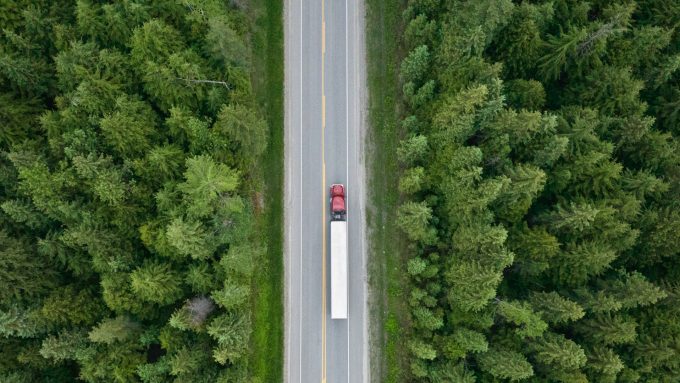If the culture of a company is defined by its leaders, Hactl is flying
News last week that Hactl, Hong Kong’s largest independent cargo handler, had launched a voluntary ...

David de Picciotto from Pledge offers his thoughts on 2024 sustainability trends in freight forwarding.
Global logistics is responsible for 11% of the world’s emissions, but the industry has been slow to take the big strides necessary to reduce this margin. But this now seems to be shifting, mainly driven by shippers’ demand for sustainable supply chains. The recently published HFW & Panattoni European Logistics & Supply Chain Sustainability Report 2023 found that:
Sustainability is gaining prominence as a central element of supply chain strategy for shippers, but what does this mean for forwarders?
Here are my thoughts on what 2024 has in store for forwarders and the wider logistics industry.
Regulations will increase pressure for shippers to seek emissions data from their forwarders
In 2022, the International Sustainability Standards Board (ISSB) introduced IFRS S2, marking the first global climate-related disclosure standard which advocates for mandatory disclosure of greenhouse gas emissions across all three emissions scopes – 1, 2, and 3 – for businesses operating worldwide. While not legally binding, governments are increasingly adopting these recommendations into their emissions reporting standards.
The EU’s CSRD has taken the lead in implementing emissions reporting regulations, mandating that shippers disclose their scope 3 emissions starting in 2024. The UK, US, Australia and Brazil are expected to follow suit with similar regulations, potentially making 2024 a pivotal year for global emissions reporting standards.
Forwarders often underestimate the value of the shipment data they hold, which is essential for providing accurate and accredited supply chain emissions measurements for their clients. 2024 is poised to be an important year when regulatory requirements and consumer demand converge to push shippers to seek freight forwarders that can proactively prepare them for supply chain emissions reporting.
Increasing importance and development of industry emissions reporting frameworks
Global logistics is one of the few industries with a specialised emissions reporting framework — the Smart Freight Centre’s GLEC Framework. This, coupled with the newly published ISO 14083 for the quantification and reporting of greenhouse gas emissions arising from transport chain operations, pave the way for the industry’s transition to net zero.
The GLEC Framework is set to become increasingly prominent in global logistics in 2024 as more businesses adopt accredited emissions measurement, paving the way for more consistent emissions reporting across supply chain stakeholders. Alongside this, the adoption of ISO 14083 will continue to gain momentum, promising a unified approach to calculating and communicating global logistics emissions. In 2024, I expect this to further drive the industry towards standardisation, garnering support from governments, investors and industry players.
Key developments in the formation of an insetting framework
Insetting involves investing in carbon reduction projects within a company’s own supply chain, directly addressing emissions from its operations and activities. This differs from offsetting, which involves purchasing carbon credits from external third-party verified projects.
The complex network of suppliers, distributors and transportation providers in the logistics supply chain presents an ideal opportunity to utilise the benefits of insetting. By investing in emission-reducing initiatives within the supply chain network, such as funding the use of sustainable fuels, companies can directly impact their own carbon footprint while encouraging broader adoption of sustainable practices within the industry.
However, there’s still a long way to go. Insetting in the logistics industry requires further development of industry-specific frameworks and verification mechanisms. The lack of standardised methodologies, globally agreed verification procedures and claims for insetting projects is currently a major barrier that’s hindering its broader adoption.
In 2024, expect to see further development of guidelines and frameworks for insetting, such as book and claim mechanisms, helping to ensure credibility and transparency of emission reduction initiatives within companies’ value chains. Foreseeably, this shall encourage greater participation from businesses. Insetting is certainly one to watch because it has the potential to have a significant impact on the decarbonisation of global supply chains.
Setting the scene for things to come
While 2024 won’t see hydrogen planes and electric freight ships become a mainstay of the industry, there will be significant steps towards creating an environment for emissions reductions within the industry.
Critically, the first step forwarders – of any size – can take is to support their clients in meeting current and impending climate disclosure obligations with accredited supply chain emissions reporting as standard. Getting the baseline right will help pave the way for the implementation of robust initiatives as the industry and businesses decarbonise.
This article is sponsored by Pledge, which provides sustainability tools for freight forwarders.
Comment on this article